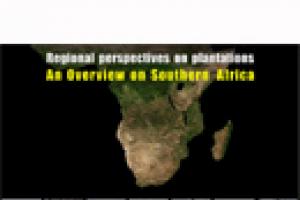Members of farmers’ organizations, women’s movements and civil society organizations from South Africa, Zimbabwe, Malawi, Swaziland, Lesotho, the DRC and Mozambique gathered on August 15-16 in Maputo, Mozambique, to analyze the multi-dimensional global crisis and the response of African governments.
Zimbabwe
Publications
15 December 2008
Timber plantations in southern Africa are concentrated in South Africa, Zimbabwe and Swaziland, but they are also expanding in Mozambique. There are smaller areas in Angola, Zambia, Malawi and Tanzania. In South Africa, the largest areas are in the provinces of Mpumalanga, KwaZulu-Natal and the Eastern Cape, covering 1.5 million hectares of land. Additionally, an estimated 1.6 million hectares have been invaded by plantation species such as acacias (wattle), eucalyptus (gum) and pines.
Other information
3 January 2008
In last month WRM bulletin Nº 125, and linked to the 12th Conference of the Parties to the United Nations Framework Convention on Climate Change held in Bali, Indonesia, in December 2007, we warned about some decisions of the Clean Development Mechanism (CDM) Executive Board that might attract more tree plantation projects to the CDM –such as the removal of restrictions that prevent providing a perverse incentive to cut down forests to replace them with CDM sponsored monocultures, and theincrease of the size of tree planting projects that can apply to the CDM under simplified procedures and
Bulletin articles
17 September 2000
The image of the last tree in a dry region of Africa being cut down by a poor peasant --ultimate responsible for environment destruction-- is widespread. Nevertheless, such image is more based on propaganda than on empirical evidence.
Bulletin articles
18 June 2000
Decentralization policies regarding forest management is being considered in the last decade an alternative to the centralized model in use in most countries, which has proved to be unable to assure forest sustainability. Many countries have given municipal and provincial governments additional forest-related responsibilities, in the hope that authorities closer to the ground will understand their local conditions better, have greater capacity to monitor what goes on, and make decisions that reflect local needs.

